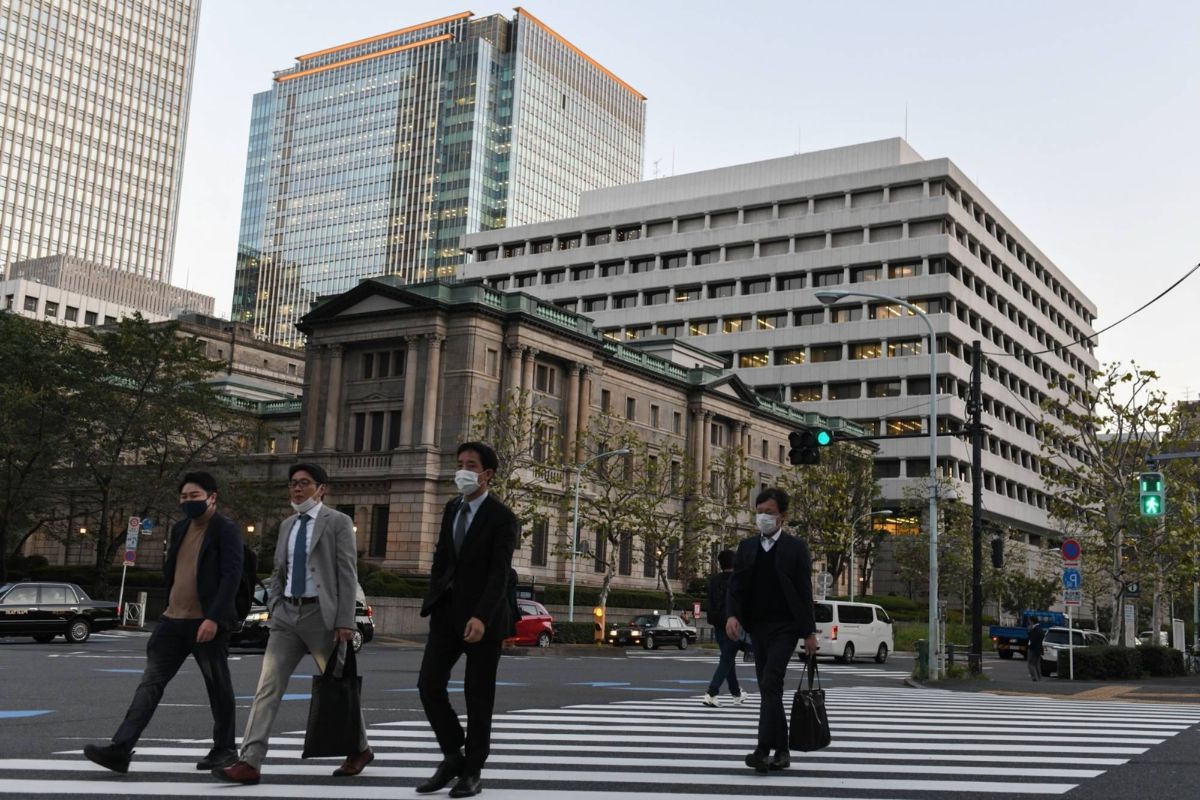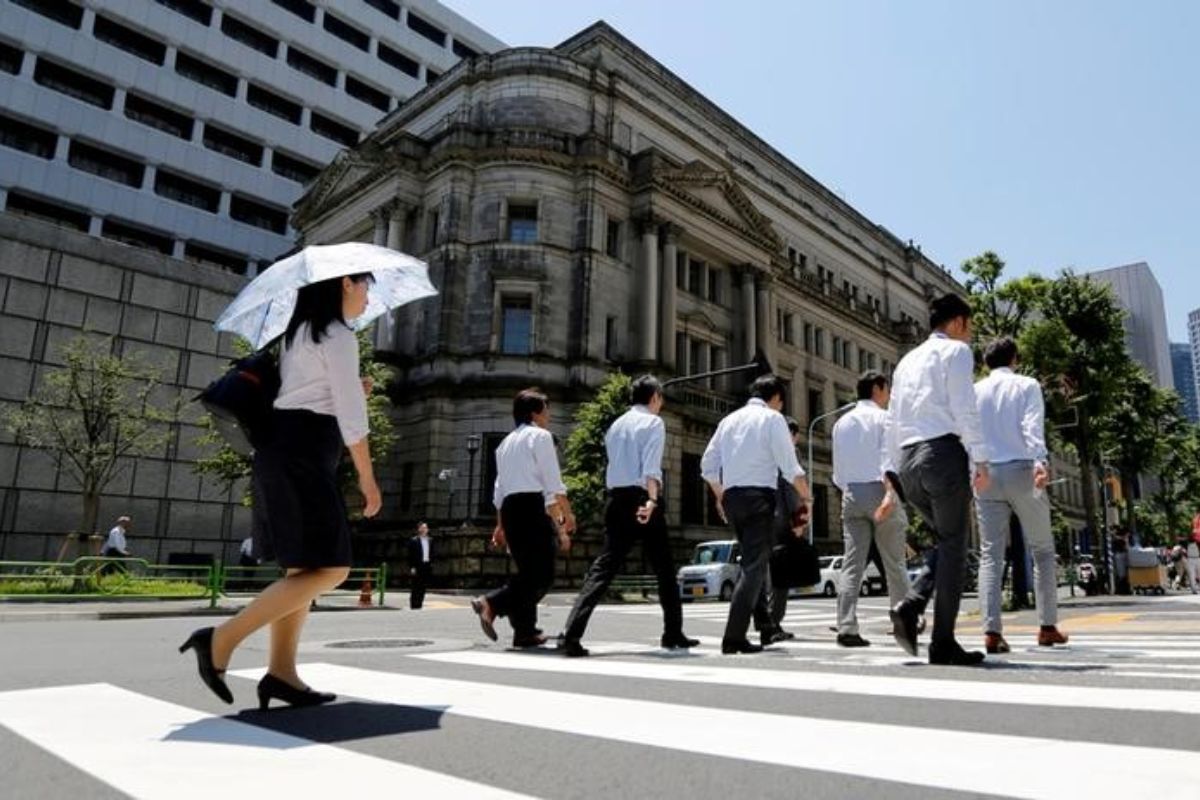BOJ Resilient Amid Recession: In the midst of a global recession, the Bank of Japan (BOJ) stands as a beacon of resilience with its unwavering commitment to the policy shift implemented in April.
While economies around the world grapple with uncertainty and faltering growth, the BOJ’s steadfast approach has raised eyebrows and sparked debates amongst experts and market observers.
As the implications of this steadfast stance ripple through financial markets, one cannot help but wonder about the potential ramifications and the intricate dance between monetary policy and economic recovery.
Key Takeaways
- BOJ remains steadfast in policy shift plans despite economic challenges.
- Market anticipates April decision as crucial for Japan’s economic revival.
- Bold moves on wage hikes and interest rates reflect BOJ’s resilience.
- Global stakeholders closely watch BOJ’s unwavering stance for economic stability.
Japan’s Recession and Shift in Global Economic Rankings
As Japan plunges into recession and surrenders its long-held global economic ranking to Germany, the Bank of Japan (BOJ) finds itself at a critical juncture in navigating the country’s economic turmoil. The once-mighty economic powerhouse now faces the harsh reality of a shrinking economy and faltering global standing.
Japan’s fall from grace is not just a mere statistical blip but a resounding wake-up call to reevaluate its economic strategies and policies. The BOJ, once revered for its adept monetary maneuvers, must now demonstrate unparalleled resilience and ingenuity to steer Japan back on course.
Also Read: Japan’s Deflation Mandate Intact Despite Potential BOJ Rate Changes
The seismic shift in global economic rankings reverberates through the corridors of power in Tokyo, prompting urgent calls for decisive action. Japan’s economic downturn is not just a domestic concern but a matter of international significance. The world watches with bated breath as the BOJ grapples with the Herculean task of restoring Japan’s economic prowess amidst fierce global competition. The stakes are high, and the BOJ’s next move will undoubtedly shape Japan’s economic destiny for years to come.
BOJ’s Focus on Wage Hikes for Economic Revival
The BOJ’s push for wage hikes emerges as a pivotal catalyst for Japan’s economic rejuvenation amidst a backdrop of GDP contraction and subdued household spending. As the central bank places its bets on potential wage increases in 2025, it aims to combat the lingering effects of sluggish household consumption and propel the nation towards sustained economic growth.
The focus on wage hikes has sparked intense debate and speculation within economic circles, with opinions divided on its effectiveness. Some view it as a revolutionary strategy that could breathe new life into Japan’s economy, while others remain skeptical, questioning its feasibility and impact. Emotions run high as stakeholders eagerly await the outcome of this bold move, hoping for a resurgence that will reshape Japan’s economic landscape.
- Hope: Will wage hikes be the silver bullet Japan needs?
- Skepticism: Can increased wages truly revive the economy?
- Anticipation: The nation holds its breath for the pivotal 2025 wage decisions.
- Optimism: A new dawn of economic prosperity on the horizon?
- Concern: What if wage hikes fail to deliver the desired results?
Timeline for Ending Negative Interest Rates
BOJ’s daring step towards potentially ending negative interest rates looms large as a pivotal shift in monetary policy approaches. With the economic landscape fraught with challenges, the BOJ’s contemplation of this move signifies a bold departure from the status quo.
The central bank, under the stewardship of Governor Kazuo Ueda, sets its sights on carefully evaluating the data before making this significant decision. The upcoming April meeting serves as the likely battleground for this policy shift, marking a potential turning point in Japan’s monetary policy trajectory.
As Ueda signals a shift away from the radical strategies of his predecessor, the financial markets brace themselves for the impending storm. The looming decision to terminate negative interest rates sends shockwaves through the economic realm, stirring debates and speculations among experts and investors alike.
The countdown to this momentous event has begun, with all eyes fixed on the BOJ’s next move and the repercussions it may unleash on the global financial landscape.
Risks and Market Expectations
Amidst the burgeoning labor shortages and fervent speculations within the market, the looming decision on terminating negative interest rates casts a shadow of uncertainty over the global financial arena. The delicate balance the BOJ must strike between economic risks and market expectations has become increasingly precarious, setting the stage for potential upheaval in the financial world.
Here are five bullet points to capture the intensity of the situation:
- Firms on the brink of wage hikes, igniting hopes for widespread salary increases.
- Market bracing for the imminent end of negative rates, with repercussions looming.
- The yen’s value hangs in the balance, ready to be swayed by the BOJ’s decision.
- Economic stability teeters on a knife’s edge as uncertainty grips investors.
- The BOJ’s challenge is monumental, as missteps could send shockwaves through global markets.
Key Data Points and Future Outlook
Can the BOJ navigate the treacherous waters of economic uncertainty and market speculation as it contemplates its exit strategy from negative interest rates? Key data points such as the conclusion of wage negotiations on March 15, revised GDP data on March 11, and the upcoming BOJ’s tankan survey on April 1 are crucial in guiding the central bank’s next move.
Analysts are anticipating a potential end to negative rates in April, with a strong emphasis on sustaining capital expenditure plans and addressing concerns surrounding a possible deeper recession. The BOJ’s ability to interpret and react to these data points will shape the future economic landscape and determine the success of its policy shift.
As market expectations fluctuate and risks loom large, the BOJ must exhibit unwavering resolve and astute decision-making to steer the Japanese economy towards stability and growth. The upcoming months will be pivotal, requiring a delicate balance of prudence and boldness to secure a prosperous future amidst challenging circumstances.
Conclusion Of BOJ Resilient Amid Recession
Amidst Japan’s recession, the BOJ remains steadfast in their policies, unwavering in their commitment to revive the economy through wage hikes. Despite risks and market expectations, the timeline for ending negative interest rates remains uncertain.
With a focus on key data points and future outlook, the BOJ’s resilience in the face of economic turmoil is commendable. The world watches with bated breath as Japan navigates through these challenging times.
Our Reader’s Queries
Q1 What is the inflation rate in Japan in 2024?
A Inflation, anticipated to hover around the mid-2% range in fiscal 2024 starting April, stems from a 3.8% rise. Tax cuts contribute 1.3 percentage points, with the remaining increase attributed to wage hikes.
Q2 What is the economy outlook for Japan in 2024?
A Anticipating a sustained moderate expansion, the Japanese economy may experience a nominal GDP growth rate surpassing 2% in 2024. This growth is fueled by the virtuous cycle of slight inflation, wage hikes, and fiscal stimulus.




